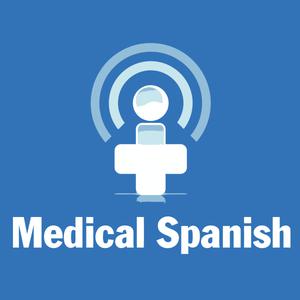
Medical Spanish Podcast
Molly Martin, MD
Interactive Audio Lessons for Healthcare and Elsewhere
- 12 minutes 19 secondsEvaluating a Patient after a Seizure in Spanish
Listen to the clinical presentation of a seizure in Spanish. A patient presents to the ER with his wife after a seizure. Since he remains post-ictal, his wife provides the history. Joining me from Venezuela, Luis Almeida plays the doctor, and Daniela Galviz plays the wife. After listening to the clinical encounter, we will review the key verbs and vocabulary related to seizures.
Use the Quizlet set to reinforce what you learned! ¡Date prisa! It will be replaced by another Quizlet set when we publish the next free lesson.
Do you like the podcast? Please leave us a 5-star review on Spotify or Apple Podcasts. This helps us reach more people and get more providers speaking Spanish!
Want to learn more? Become a member! We could not do this without the support of our members. Gracias de todo corazón.
Member? Mark this lesson complete before a new lesson is dropped in the Seizure module of our Spanish for Emergencies course. Stay tuned!
Dialogue
1:14
What happened?
Doctor: Hola, señora. Soy el doctor Almeida. ¿Cuál es su relación con el paciente?
Epsosa: Soy su esposa.
D: ¿Me puede decir lo que le pasó a su esposo?
E: Cuando estaba lavando los trastes, escuché un ruido sordo en la otra habitación y lo encontré en el suelo haciendo ruidos (raros) extraños, como si estuviera gruñendo, y todo su cuerpo estaba sacudiéndose.
Describing the event
D: ¿Se puso tieso después empezó a brincarle el cuerpo?
E: Exactamente eso doctor. Todo su cuerpo se puso muy rígido y tenía los ojos en blanco y le salía espuma por la boca. Después se empezó a sacudir violentamente. Estaba gruñendo y resoplando. Noté que rechinó los dientes, hasta se mordió la lengua.
Loss of awareness
D: ¿Y durante el episodio le podía responder?
E: No, dije su nombre varias veces y no me hizo caso.
D: ¿Parecía haber perdido el conocimiento?
E: Sí, se desvaneció completamente.
D: ¿Perdió el control de la vejiga?
E: No que yo me haya dado cuenta.
D: Y me dijo usted que se mordió la lengua. ¿Verdad?
E: Así es. Me espanté al ver la sangre saliendo de su boca. ¿La ve?
D: Entiendo, tranquila. Esto pasa mucho cuando una persona sufre un ataque convulsivo. ¿Había convulsionado antes de esto?
E: No que yo sepa.
D: Y después de recobrar la conciencia, ¿le podía hablar?
E: Bueno. Estaba muy somnoliento. Roncaba, y mientras poco a poco volvía en sí, estaba confundido y sigue así. Me preocupa doctor. Nunca lo había visto así.
History
D: Bueno para intentar averiguar la causa de la convulsión, le tengo que hacer algunas preguntas, señora.
E: Bien.
D: ¿Se ha golpeado la cabeza recientemente?
E: Hasta donde yo sé. No.
D: ¿Ha sufrido de alguna enfermedad últimamente? Por ejemplo, ¿Ha tenido calentura? ¿Ha tenido dolor de cabeza o dolor de cuello? ¿Le ha parecido confundido?
E: No, de hecho acabamos de ir a la feria estatal, y la pasamos muy bien.
D: ¿Ha consumido alguna sustancia, alguna droga, o alcohol en la última semana?
E: Bueno, a mi esposo le gusta tomar. Y justo ayer, discutimos sobre esto y me dijo que iba a tomar menos.
Head CT
D: Entiendo. Gracias por la información, esto nos ayuda a atender mejor a su esposo. Ahora vamos a hacerle una tomografía del cerebro para asegurarnos de que no tenga una lesión que pueda haber causado las convulsiones.
Vocabulary
3:54
Gruñir
To gruntSacudir, sacudirse
To shakeWhen using the intransitive form of the verb to express the whole body shaking or something shaking on its own, we use the pronominal form of the verb, SACUDIRSE.
Lo encontré en el suelo haciendo ruidos extraños, como si estuviera gruñendo. Y todo su cuerpo estaba sacudiéndose.
Rígido, Tieso
StiffPonerse tieso, ponerse rígido
To become stiffBrincar
To jumpPeople may also say, “Me brinca el corazón” or “Me salta el corazón” to express the sensation of the heart skipping around or palpitating.
Tener los ojos en blanco
To have one’s eyes rolled back in one’s head.La espuma
Foam.Le salía espuma por/de la boca.
He was foaming at the mouth.D: ¿Se puso tieso y después empezó a brincarle el cuerpo?
E: Exactamente eso, doctor. Todo su cuerpo se puso muy rígido y tenía los ojos en blanco y le salía espuma por la boca.
Resoplar
To snortEstaba gruñendo y resoplando.
Rechinar
to grind, as in to grind one’s teethMorder, morderse
to bite,When expressing a reflexive action, such as biting one’s tongue, we use the pronominal form of the verb.
Noté que rechinó los dientes. Hasta se mordió la lengua.
Perder el conocimiento / la conciencia
To lose consciousnessPerder el control de la vejiga
To lose bladder controlD: ¿Parecía haber perdido el conocimiento?
E: Sí. Se desvaneció completamente.
D: ¿Perdió el control de la vejiga?
E: No que yo lo haya notado.
El ataque epiléptico
La crisis epiléptica
La convulsión
Convulsive seizureEl ataque epiléptico
La crisis epiléptica
Epileptic seizureEpileptic seizure in English, ATAQUE EPILÉPTICO, CRISIS EPILÉPTICA does not refer to epilepsy. It simply means the patient had a spell due to abnormal electrical brain activity.
Convulsionar
To seize, to convulseD: Esto pasa mucho cuando una persona sufre un ataque convulsivo. ¿Había convulsionado antes de esto?
E: No que yo sepa.
Recobrar el conocimiento / la conciencia
To regain consciousnessSomnoliento
DrowsyRoncar
To snoreConfundido
ConfusedD: Y después de recobrar la conciencia, ¿le podía hablar?
E: Bueno, estaba muy somnoliento. Roncaba. Y mientras poco a poco volvía en sí, estaba confundido y sigue así.
Gracias por estudiar español con nosotros.
The post Evaluating a Patient after a Seizure in Spanish appeared first on Doc Molly.16 April 2024, 9:42 pm - 17 minutes 43 secondsLearn Neurological Symptoms in Spanish!
Join Luis and me as we practice neurological symptoms in Spanish. We will learn helpful vocabulary for discussing headaches, strokes, head trauma, seizures, and more. In the next member lesson, we will use this vocabulary in questions.
Watch the video version of this lesson on YouTube.
Member at docmolly.com? Access this lesson within our History and Exam course to download the PDF, take the Quiz, and mark it complete.
Master Medical Spanish With Us!
Become a member and get access to ALL our Medical Spanish lessons!
Sign up for our History and Exam Course.Headache
1:31
El dolor de cabeza
Severe headache
La jaqueca
Migraine
La migraña, la jaqueca
Neck stiffness
La rigidez en el cuello
RIGIDEZ is a useful word when speaking of stiffness in the muscles and joints. ¿Ha notado rigidez muscular?
Changes in vision
Los cambios en la vista, los cambios en la visión.
Sensation
3:01Feeling or sensitivity
La sensibilidad
When referring to a sensation, we use LA SENSACIÓN. When referring to the ability to feel or sensitivity, we use LA SENSIBILIDAD.
Do you have feeling in your arm? ¿Tiene sensibilidad en el brazo?Light sensitivity
La sensibilidad a la luz
Numbness
El adormecimiento, el entumecimiento
Numb
Adormecido(a), entumecido(a)
When referring to someone who is non-binary, you used the ending E, Thus, numb becomes ADORMECIDE, ENTUMECIDE.
Tingling
El hormigueo
And this comes from the word for ant HORMIGA.
Balance
5:26Balance problems
Los problemas de equilibrio
Unstable
Inestable
The adjective for unstable in Spanish is gender neutral.
Vertigo
El vértigo
Dizziness
Los mareos, el mareo
Dizzy
Mareado(a)
Weakness
6:41Weakness
La debilidad
Weak
Débil
The adjective for weak in Spanish is neutral and does not change based on gender.
Fatigue
La fatiga, el cansancio
Sleepiness or drowsiness
El sueño, la somnolencia
Drowsy
Somnoliento(a)
Impaired Cognition
8:03Hallucinations
Las alucinaciones
Confusion
La confusión
Confused
Confundido(a)
Difficulty remembering things
La dificultad para recordar cosas
Head Trauma
9:05Blow to the head
El golpe en la cabeza
To hit one’s head
Golpearse la cabeza
When speaking of accidents or injuries such as breaking a leg or hitting your head, we use the pronominal form of the verb. Romperse la pierna. Golpearse la cabeza. He broke his leg. Se rompió la pierna. Oh, I hit my head. Me golpeé la cabeza.
To lose consciousness
Perder el conocimiento, perder la consciencia
To faint
Desmayarse
Note that this is a pronominal verb. I faint. Me desmayo.
Concussion
La conmoción cerebral, la contusión cerebral
We also use the word CONTUSIÓN to refer to bruises or contusions in other parts of the body. Sufrió una contusión en el muslo.
Seizures
11:26Seizure
El ataque convulsivo
Convulsions, seizures
Las convulsiones
Gloria, my teacher from Mexico, recommends using CONVULSIONES in its plural form, as it may sound weird to ask someone, ¿Ha tenido alguna vez una convulsión? To Gloria, this sounds like we’re asking about one convulsion of the body rather than a series of convulsions that make up a seizure. In this case, Gloria suggested. Ha tenido alguna vez convulsiones? That being said, my teachers outside of Mexico have told me that using una convulsión to refer to a seizure is perfectly fine.
To convulse or seize
Convulsionar
Muscular spasms
Los espasmos musculares
Repetitive movements
Los movimientos repetitivos
Involuntary movements
Los movimientos involuntarios
To stare into space or to stare blankly
Estar con la mirada perdida
Tremor
El temblor
To shake or tremble
Temblar
To lose bladder control
Perder el control de la vejiga
To lose bowel control
Perder el control intestinal, perder el control de los intestinos
To bite one’s tongue
Morderse la lengua
So when we perform an action on ourselves, we use the pronominal verb, MORDERSE. followed by the body part, LA LENGUA. I wash my hands. Me lavo las manos.
Gracias por estudiar español médico con nosotros.
The post Learn Neurological Symptoms in Spanish! appeared first on Doc Molly.30 March 2024, 10:00 am - 13 minutes 19 secondsAsking About Tobacco Use in Spanish
In this lesson, we will learn to ask about tobacco use in Spanish.
You will hear a brief clinical dialogue where the doctor asks the patient if they smoke, when they quit, for how long they smoked, and how much they smoked per day. After listening to the dialogue, we will review the vocabulary before learning the questions and responses in Spanish. We will also learn to ask if the patient chews or vapes tobacco.
This is the first in a series of lessons covering substance use disorders, TRASTORNOS POR EL CONSUMO DE DROGAS. We’ll revisit this topic several times throughout the rest of the year.
Reinforce what you learn using the Quizlet Set for this lesson!
Member? Download the PDF for this lesson.
LEVEL – INTERMEDIATE
Gracias a Sandra Chacón de Lapa Verde Spanish School por su ayuda con esta lección.
Grabé esta lección durante un viaje de imersión a Costa Rica con Common Ground International.
¿Quieres aprender más con nosotros y apoyar el podcast? ¡HAZTE MIEMBRO!
Clinical Dialogue in Spanish
1:46
Doctora: ¿Fuma usted?
Paciente: Ahora no, pero antes sí.
D: ¿Cuándo dejó de fumar?
P: Hace dos años, cuando quedé embarazada.
D: Excelente. Bien hecho. ¿Por cuánto tiempo fumó?
P: Casi cinco años.
D: ¿Qué cantidad de cigarrillos fumaba por día?
P: Casi una cajetilla al día.
D: ¿Consume tabaco de otra forma?
P: ¿Cómo de otra forma?
D: ¿Mastica tabaco? No.
Vocabulary
2:20
To smoke
Fumar
To stop smoking
Dejar de fumar
To become pregnant
Quedar embarazada
Embarazarse
Well done
Bien hecho
How much?
¿Cuánto?
For how long? For how much time?
¿Por cuánto tiempo?
Cigarettes
Los cigarrillos
How many?
¿Cuántos? ¿Cuántas?
How many cigarettes?
¿Cuántos cigarrillos?
¿Qué cantidad de cigarrillos?
A pack (as in a pack of cigarettes)
Una cajetilla
Tobacco
El tabaco
To use tobacco
Consumir tabaco
We use the verb CONSUMIR to express using a drug or substance.
To chew
Masticar
Interpret
2:20
(Using “Usted”) Do you smoke?
¿Fuma usted?
Not now, but I used to.
According to my teachers in Mexico, there it is more common to reverse the word order and ask, ¿Usted fuma?
Ahora no, pero antes sí.
When did you stop smoking?
¿Cuándo dejó de fumar?
Two years ago.
Hace dos años.
Two years ago, when I became pregnant.
Hace dos años, cuando quedé embarazada.
Excellent. Well done.
Excelente. Bien hecho.
For how long did you smoke?
¿Por cuánto tiempo fumó?
¿Cuánto tiempo fumó?
Note how we’ve used the PRETERITE to express discrete and completed actions.
When did you quit smoking?
¿Cuándo dejó de fumar?
When I became pregnant
Cuando quedé embarazada
For how long did you smoke?
¿Por cuánto tiempo fumó?
In each of these examples, the action is discrete, meaning the action was carried out and completed at one defined point in time.
Almost five years
Casi cinco años
How many cigarettes did you smoke per day?
¿Qué cantidad de cigarrillos fumaba por día?
¿Cuántos cigarrillos fumaba por día?We used the IMPERFECT (fumaba) because we are asking about a REPETITIVE action in the past.
Almost a pack a day
Casi una cajetilla al día
Per day
Por día, al día
Do you use tobacco in other ways?
¿Consume tabaco de otra forma?
How else can you use it? (There’s no direct translation for this one.)
¿Cómo de otra forma?
Do you chew tobacco?
¿Mastica tabaco?
To vape
Vapear
Do you vape tobacco?
¿Vapea tabaco?
Returning to the Dialogue
10:44
¡Gracias por estudiar español médico con nosotros!
¡Refuerza lo aprendido utilizando el Quizlet Set para esta lección!
The post Asking About Tobacco Use in Spanish appeared first on Doc Molly.13 March 2024, 8:15 pm - 14 minutes 45 secondsIntro to Newborn Hearing Screening in Spanish
Welcome to the first lesson in our series on Newborn Hearing Screening in Spanish!
This series was requested by one of our listeners, Hyun from Maryland. Hyun is a newborn hearing technician who wants to learn phrases in Spanish for a newborn hearing screening.
Even if you never plan to perform a newborn hearing screening, I promise you will learn helpful vocabulary and phrases for your clinical practice.
In this series of 3 lessons,
- We will learn how to ask about childhood hearing loss on either side of the family and complications during pregnancy.
- As we describe the procedure, we will learn how to explain that the earbud will play chimes, that it is not painful, and that we can soothe the baby using the sucking reflex.
- Finally, we will learn how to express a good result and explain that a bad result may be due to fluid in the ear and that we must allow some time for the ears to dry before retesting.
This first lesson is free! To keep learning with us, become a member!
Member? Download the PDF:
Introduction to Newborn Hearing Screening PDF
Reinforce what you learn using the Quizlet set for this lesson!
Screening Test
2:49
La prueba de detección de problemas de audición en los recién nacidos
Screening test for hearing problems in newborns
Vocabulario
La prueba de detección
Screening Test
Los problemas de audición
Hearing problems
El recién nacido, la recién nacida
Newborn
Los recién nacidos
Newborns
Family History
4:54
¿Hay antecedentes de pérdida de audición infantil en la familia paterna o en la familia materna del bebé?
Is there a history of childhood hearing loss on either side of the baby’s family?
Los antecedentes
Prior cases, history
La pérdida de audición infantil
Childhood hearing loss
La familia paterna
The father’s side of the family
La familia materna
The mother’s side of the family
En la familia paterna o en la familia materna del bebé
On either side of the baby’s family
Complications during pregnancy
7:36
¿Usted sufrió alguna complicación durante el embarazo que hace que el médico se preocupe por la salud del bebé?
Did you suffer any complications during your pregnancy that cause the doctor to be concerned about the baby’s health?
Alguna complicación
Any complications
El embarazo
Pregnancy
Preocuparse
To be concerned
Preocuparse por la salud del bebé
To be concerned about the baby’s health
Alguna complicación que hace que el médico se procupe
A complication that causes the doctor to be concerned
We use the subjunctive following verbs of influence, like HACER or CAUSAR. Learn more about verbs of influence.
La salud del bebé, la salud de la bebé
The baby’s health
More Lessons for Pediatrics
- Child Development in Spanish
- Viral Gastroenteritis in Spanish
- Fever and a Rash – A Call to the Clinic in Spanish
- ADHD in Spanish – Problemas en la escuela
- ADHD in Spanish – Diagnóstico y tratamiento
- Assess Asthma in Spanish like a Superstar!
Gracias a Daniela Grave y a Luis Almeida por su ayuda con esta lección.
Become a member to hear the upcoming lessons in this series.
¡Gracias por aprender español médico con nosotros!
The post Intro to Newborn Hearing Screening in Spanish appeared first on Doc Molly.24 February 2024, 4:01 pm - 22 minutes 35 secondsLearn Gastrointestinal Symptoms in Spanish!
Join Luis and me as we review gastrointestinal symptoms in Spanish. After the vocab review, we will practice some questions related to upper GI tract symptoms. In the next member lesson, we will complete our gastrointestinal review of systems in Spanish.
Watch the video version of this lesson on YouTube.
Member at docmolly.com? Access full show notes, the PDF, and the Quizlet set for this lesson.
Master Medical Spanish With Us!
Become a member and get access to ALL our Medical Spanish lessons!
Sign up for our History and Exam Course.TimeStamps
1:29 Symptoms
8:47 Belly and Guts
Questions
11:00 Nausea
12:58 Heartburn and Swallowing
Closing
20:43 Support the podcast and access premium content.
Related Lessons
The Sh¡t Show with Hector y Beto de “No Hay Tos“
Vocabulary
Symptoms
Stomach pain
El dolor de estómago.Cramps (as in stomach cramps)
Los retorcijones
Los retortijones
Los cólicosVomiting
Los vómitosDiarrhea
La diarreaConstipation
El estreñimientoIndigestion
La indigestiónNausea
Las náuseasMorning sickness
Las náuseas de embarazo.
Las náuseas matutinasHeartburn
Las agruras
La acidez (estomacal)Gastric reflux
El reflujo gástricoUlcer
La úlceraPeptic ulcer
La úlcera pépticaGastric ulcer
La úlcera gástricaDuodenal ulcer
La úlcera duodenalStool or bowel movement
Las heces
El excremento
El/la popóDark red-colored poop
El popó de color rojo oscuro
La popó de color rojo oscuroBlack-colored stool (HECES)
Las heces de color negro.Clay-colored excrement (EXCREMENTO)
El excremento de color arcilla.Grey-colored stool (POPÓ)
La popó de color grisHemorrhoids
Las hemorroides
Las almorranasBlood in the stool (HECES)
La sangre en las hecesJaundice
La ictericiaYellow skin
La piel amarillaDark urine
La orina oscuraBelly
Belly
La barriga
La panza
La pancita (when speaking to children)Potbellied
Barrigón
Barrigona
Panzón
PanzonaPregnant belly, womb
El vientreAnd finally, you may also hear the following to refer to one’s belly
La tripaIntestines, guts
La(s) tripa(s)¡Gracias por aprender español médico con nosotros!
The post Learn Gastrointestinal Symptoms in Spanish! appeared first on Doc Molly.2 February 2024, 4:49 pm - 20 minutes 20 secondsContraindications to Thrombolytics in Spanish – Parte 1
In this lesson, we learn how to discuss contraindications to thrombolytics in Spanish.
To assemble this lesson, I used a list of contraindications in the stroke chapter of my favorite medical education resource, MKSAP 19.Luis Almeida joins us from Venezuela to help us with the Spanish for this lesson.
A video version of this lesson with subtitles is on YouTube. Check out our Shorts, where I share helpful tips.
Member? Access full show notes, the Quizlet set, and the PDF for this lesson within our Spanish for Emergencies course!
Not a member yet? Become a Premium Medical Spanish member. Access our collection of over 400 medical Spanish lessons, all our courses with quizzes, and our Premium Medical Spanish Podcast feed!
LEVEL – ADVANCED
There is a lot to cover. Therefore, we will do it in two lessons. In this free lesson, we will cover Spanish for the following contraindications to thrombolytic therapy:
03:24 Greater than 4.5 hours since symptom onset
05:05 Recent head trauma or stroke,
07:03 Active internal bleeding,
08:21 Recent gastrointestinal or genitourinary bleeding,
11:25 Increased risk of bleeding or bleeding diathesis,
14:15 Elevated BP (> 185/110) despite treatment
17:04 Low blood sugar (<50 mg/dL)
18:26 Do you like our Medical Spanish lessons? Support the podcast by becoming a member!
In the upcoming member lesson, we will complete our review of Spanish for discussing contraindications to thrombolytics.
¡Gracias por escuchar!
The post Contraindications to Thrombolytics in Spanish – Parte 1 appeared first on Doc Molly.14 January 2024, 7:06 pm - 13 minutes 18 secondsExplain Thrombolytics for Stroke in Spanish
In this lesson, we learn how to explain thrombolytic therapy for stroke in Spanish. In future lessons, we will go over contraindications and risks.
Luis Almeida joins us from Venezuela to help us with the Spanish for this lesson.
A video version of this lesson with subtitles is on YouTube. Check out our Shorts, where I share helpful tips.
Member? Access full show notes, the Quizlet set, and the PDF for this lesson within our Spanish for Emergencies course!
Not a member yet? Become a Premium Medical Spanish member. Access our collection of over 400 medical Spanish lessons, all our courses with quizzes, and our Premium Medical Spanish Podcast feed!
LEVEL – ADVANCED
We have a drug called a thrombolytic.
1:01Tenemos un tipo de medicamento que se llama trombolítico.
thrombolytics
los trombolíticosIt dissolves the clot in your brain.
1:49Este medicamento disuelve rápidamente el coágulo que está bloqueando una arteria en su cerebro.
to dissolve
disolverthe clot
el coáguloto block or obstruct
bloquearartery
la arteriabrain
el cerebroOur objective
Restore blood flow to the brain
4:05Nuestro objetivo es restablecer el flujo de sangre y oxígeno a las células del cerebro y a su vez, limitar el daño y la discapacidad que usted sufra.
goal or objective
el objetivoto restore
restablecerblood flow
el flujo de sangreoxygen
el oxígenocells
las célulasLimit disability
6:01Y a su vez, limitar el daño y la discapacidad que usted sufra.
in turn
a su vezharm or damage
el dañodisability
la discapacidadIt must be administered ASAP.
8:06Es muy importante que le administremos este medicamento lo más pronto posible.
to administer
administrar, aplicaras soon as possible
lo más pronto posibleIt is administered by IV.
9:38Se le aplica este medicamento trombolítico (por la vena) por vía intravenosa.
intravenously
por vía intravenosato administer
aplicar, administrarI am going to ask you some questions.
Antes de administrarle el medicamento, le voy a hacer algunas preguntas.
In the next member lesson, we’ll practice asking questions about absolute contraindications for thrombolytics in Spanish. In a future lesson, we will explain the risk of thrombolytics.
Related Lessons
- Stroke Symptoms in Spanish
- Treatment of Chest Pain in the Hospital
- Thrombosis with Thrombocytopenia Syndrome in Spanish
This lesson introduces a new chapter on the Treatment of Stroke in the Stroke Module of our Spanish for Emergencies Course.
The post Explain Thrombolytics for Stroke in Spanish appeared first on Doc Molly.5 January 2024, 2:57 am - 3 minutes 30 secondsSay Happy Holidays in Spanish!
Do you know how to say Happy Holidays in Spanish? In this lesson, we practice saying Happy Holidays, Merry Christmas, Happy New Year, and more in Spanish.
Watch the video version of this lesson on YouTube.
Sign up for our member lessons and get 25% off your subscription through New Year’s Day 2024.
- All Access Subscription (All our Medical Spanish + Spanish Grammar lessons)
- Premium Medical Subscription
- Premium Grammar Subscription
LEVEL – BEGINNER
Happy Holidays
¡Felices Fiestas!
¡Felices Vacaciones!
Merry Christmas
¡Feliz Navidad!
Happy New Year
¡Feliz Año Nuevo!
I wish you a happy new year!
Te deseo un próspero año nuevo.
Les deseo un próspero año nuevo.
Happy 2024!
¡Feliz 2024!
If you like this podcast, please give us a 5-star review on Apple Podcasts and Spotify! Así podemos llegar a más gente. ¡Gracias!
The post Say Happy Holidays in Spanish! appeared first on Doc Molly.23 December 2023, 8:54 pm - 11 minutes 52 secondsSymptoms of the Ears, Nose, Throat, and Chest in Spanish
Join Luis and me as we review symptoms of the ears, nose, throat, and chest in Spanish.
Watch the video version of this lesson on YouTube.
Master Medical Spanish With Us!
Become a member and get access to ALL our Medical Spanish lessons!
Sign up for our History and Exam Course.Related Lessons
- Flu Symptoms in Spanish
- Asking About Chest Pain in Spanish
- Asthma Questions in Spanish
- Spanish for Dentistry
- Spanish for Eye Care
Gracias a Luis Almeida, de Venezuela, por ayudarnos con el español de esta lección.
Síntomas
Ears (and Eyes)
1:21watery eyes
los ojos llorososringing in the ears
el zumbido en los oídos
el tintineo en los oídosWhen referring to the sensory apparatus of the ear, we say OÍDO. When referring to the outer part of the ear or the auricle, we say OREJA.
plugged ear
el oído tapadoMouth
2:24toothache
el dolor de muelas
el dolor de dientesMUELAS specifically refers to the molars, but it is very common to use DOLOR DE MUELAS when referring to a toothache.
bleeding gums
las encías sangrantesmouse sores
las llagas en la bocadry mouth
la boca secaNose
3:33congestion
la congestióncongested or stuffy nose
la nariz congestionada
la nariz tapada
la nariz constipadaCuidado con CONSTIPADO. It means CONGESTIONADO, not constipated.
runny nose
mucha secreción nasal
(los) mocos
la nariz suelta*The last one, LA NARIZ SUELTA, is not in the audio lesson.
nosebleed
el sangrado por/de la nariz
la hemorragia nasalThroat
5:07sore throat
el dolor de gargantascratchy or itchy throat
la picazón en la garganta
la comezón en la gargantachange in voice
el cambio en la vozhoarseness
la ronquerasnoring
los ronquidoscough
la toscough with phlegm or productive cough
la tos con flemaslots of phlegm
mucha flemablood in the phlegm
la sangre en las flemasCold and Flu
6:49cold, as in upper respiratory infection
el catarro
el resfriadoflu or bad cold
la gripe
la gripaWhen you hear someone say, “Tengo gripe” or “Tengo gripa,” they’re usually saying that they have a bad cold and are not referring specifically to LA INFLUENZA.
Chest
7:35chest pain
el dolor de pecho
el dolor en el pechoOften, people with angina will deny having chest pain. Instead, they’ll describe a discomfort or pressure in the chest.
chest discomfort
las molestias en el pechochest pressure
la presión en el pechorapid heartbeat
los latidos rápidos del corazónirregular heartbeat
los latidos irregulares del corazónpalpitations
las palpitacionesdifficulty breathing, shortness of breath
la dificultad para respirar
la falta de airewheezing
la sibilancia
el silbidoNot all patients will know the word SIBILANCIA, so you could also use another word for wheezing, which also means whistle.
Gracias por escuchar.
The post Symptoms of the Ears, Nose, Throat, and Chest in Spanish appeared first on Doc Molly. 12 December 2023, 6:33 pm
12 December 2023, 6:33 pm - 13 minutes 31 secondsSkin and Musculoskeletal Symptoms in Spanish
Join Luis and me as we cover skin and musculoskeletal symptoms in Spanish in this Review of Systems lesson.
Check out the entire lesson on YouTube.
Gracias a Luis Almeida de Venezuela que grabó el español para esta lección.
Master Medical Spanish With Us!
Become a member and get access to ALL our medical Spanish lessons!
Sign up for our History and Exam Course.
Already a member? Access full show notes, quiz, downloadable PDF, and ask a question within our History and Exam Course.
Lessons Related to Skin and Musculoskeletal Symptoms
- Describing Our Bodies in Spanish
- Describing Our Skin in Spanish
- My Shoulder Hurts – Spanish for Physical Therapy
- Bruises, Cuts, Ruptures, Breaks, Tears, and Sprains
Skin and Musculoskeletal Symptoms
1:41
la hinchazón (swelling)
el enrojecimiento (redness)
la comezón, la picazón (itching)
las ronchas (hives)
la quemadura (burn)
la rozadura (abrasion, chafe)
la cortada, la cortadura (cut)
la mordedura, la mordida (animal bite)
la picadura (insect bite)
el nódulo (nodule)
el bulto (lump)
el chichón (bump)
la verruga (wart)
la arruga (wrinkle)
el sarpullido, el salpullido, la erupción (rash)
el ardor (burning)
la secreción, el flujo, la supuración (discharge)
el líquido (fluid, liquid)
el pus (pus)
la rigidez (stiffness)
la fractura (fracture)
la herida (wound, injury)
la lesión (lesion, injury)
la llaga (sore, ulcer)
la úlcera (ulcer)
la ampolla (blister)
el cambio de color (change in color)
el cambio de tamaño (change in size)
el cambio de aspecto (change in appearance)
el moretón, el cardenal (bruise)
la cicatriz (scar)
la mancha (spot)
la zona de piel irritada (area of irritated skin)
el lunar inusual (unusual mole)
las pecas (freckles)
los granitos, los barritos, las espinillas (pimples)
los granitos (little bumps)
la espinilla (blackhead, shin)
los calambres (muscle cramps)Use TENER to Ask About Symptoms Above
8:54
¿Tiene + síntoma + en la parte del cuerpo?
¿Tiene un sarpullido en la espalda?
Do you have a rash on your back?¿Tiene rigidez en las articulaciones?
Do you have joint stiffness?¿Tiene ampollas en los pies?
Do you have blisters on your feet?¿Tiene una quemadura en el abdomen?
Do you have a burn on your abdomen?¿Ha tenido úlceras en la boca?
Have you had ulcers in your mouth?¿Ha tenido una herida en la pierna?
Have you had an injury to your leg?You would use ALGUNA HERIDA here if asking if they ever had ANY injury to their leg. (We’ll practice this more at the end of the lesson.)
¿Ha tenido una fractura en el brazo?
Have you had a fracture in your arm?¿Tiene comezón en los pies?
Do your feet itch?¿Tiene ardor en las manos?
Do your hands burn?¡Gracias por escuchar!
The post Skin and Musculoskeletal Symptoms in Spanish appeared first on Doc Molly.24 November 2023, 2:14 am - 19 minutes 31 secondsWhen You Have to Stop Resuscitation in Spanish
Learn how to explain interventions performed during advanced cardiac life support and the decision to stop resuscitation in Spanish. This is the third of 4 scenarios in which the paramedics care for a patient who has suffered an out-of-hospital arrest.
LEVEL - ADVANCED
Video version of this lesson with subtitles in YouTube. Check out our Shorts where I share useful tips.
ONE-QUESTION SURVEY: Do you want me to continue to do the podcast primarily in Spanish?
Member? Access full show notes, the Quizlet set and the PDF for this lesson within our Spanish for Emergencies course!
TimeStamps
CLINICAL ENCOUNTER 1:44
VOCABULARY REVIEW
Cardiac arrest, heart history, stents 4:25
Medical Terms: Asystole, ROSC, ACLS 5:35
Interventions Performed 9:04
Next Steps 12:23
RETURN TO ENCOUNTER 14:39
CLOSING 17:01
Learn More Medical Spanish!
Become a member and get access to our interactive member lessons, where we interpret the clinical dialogue as we review the vocabulary and grammar, as well as full lesson notes, PDFs, and quizzes.
You can also subscribe to access the last 3 months of our member audio lessons via Apple Podcasts.
Related Lessons
Lessons covering discussions on code status in Spanish
- Explaining CPR in Spanish
- Discussing a DNR Order in Spanish
- Spanish for Paramedics: Too Late for CPR
- Spanish for Paramedics: CPR en Route to Hospital
I recorded this clinical encounter with one of my Spanish teachers from México, Daniela Grave. Click here to take lessons with Daniela.
Vocabulary Review
Presenting the Scene
4:25to witness or to be present during an event.
presenciarcardiac arrest
el paro cardíacoto have a history of heart attack
tener antecedentes de infarto cardíacostents, as in drug-eluting stents or coronary stents
los stentswitness
el testigoMedical Terms: Asystole, ROSC, ACLS
5:35CPR
la RCPEmergency Medical Services
Los Servicios Médicos de Emergencia
Los Servicios de Emergencias MédicasThe next few terms are medical jargon, so don’t worry about them if you’re only going to be speaking with patients.
asystole
la asistoliaHe remains in asystole.
Sigue en asistolia.
Permanece en asistolia.Return of Spontaneous Circulation
El Retorno de la Circulación EspontáneaRCE by its Spanish acronym
RCE por sus siglas en españolAdvanced Life Support Intervention
La Intervención de Soporte Vital AvanzadoAdvanced Cardiac Life Support (ACLS)
Soporte Vital Cardiovascular Avanzado (SVCA)to stop cardiopulmonary resuscitation
detener / parar la reanimación cardiopulmonarthe paramedic (woman) in charge of the resuscitation team
la paramédica encargada del equipo de reanimación
la paramédica a cargo del equipo de reanimaciónto take charge or to assume care of someone or something
hacerse cargo de
encargarse deAdvanced Life Support Interventions
9:04
He didn’t have a pulse and he wasn’t breathing.
No tenía pulso y no respiraba.We use the IMPERFECT to DESCRIBE the patient when the paramedics arrived.
to perform chest compressions
realizar compresiones torácicasto pump blood to his brain
bombear sangre a su cerebroAlthough it is more common to use a definite article (i.e. EL, LA) before parts of the body, it’s best to use a possessive article (i.e. SU, SUS), when describing medical interventions on one’s loved one. This demonstrates a more personal connection with the patient.
to pump blood to the rest of his body
bombear sangre al resto de su cuerpoa mask with a bag
una mascarilla con bolsaWhen speaking to the family, instead of using the technical term: “bag valve mask” or “Ambu bag,” we simply said a bag mask or a mask with a bag.
to breathe for someone
respirar por alguiento push air into his lungs
introducir aire en sus pulmonesby IV, intravenously
por vía intravenosaa round of chest compressions
una ronda de compresiones torácicasNext Steps
12:23police officer
el oficial de policíathe medical examiner’s office
la oficina del médico forenseHe already passed away.
Él ya falleció.To express that something has already occurred, it is common to use: Ya + verbo en pretérito.
Unfortunately, there is no more we can do to revive him.
Desafortunadamente, no hay nada más que podamos hacer para reanimarlo.We use the subjunctive to express what we cannot do: “No hay nada más que podamos hacer.” We always use the subjunctive in adjective clauses that describe something that does not exist. Learn More: Quiz – The Subjunctive in Adjective Clauses
Gracias por aprender español médico con nosotros.
The post When You Have to Stop Resuscitation in Spanish appeared first on Doc Molly.8 November 2023, 7:12 pm - More Episodes? Get the App
Your feedback is valuable to us. Should you encounter any bugs, glitches, lack of functionality or other problems, please email us on [email protected] or join Moon.FM Telegram Group where you can talk directly to the dev team who are happy to answer any queries.
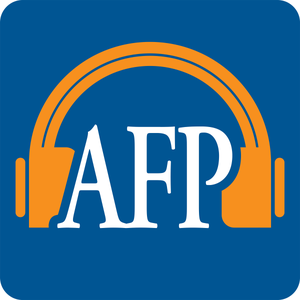 AFP: American Family Physician Podcast
AFP: American Family Physician Podcast
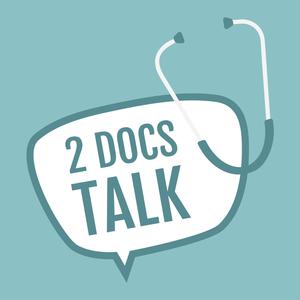 2 Docs Talk: The podcast about healthcare, the science of medicine and everything in between.
2 Docs Talk: The podcast about healthcare, the science of medicine and everything in between.
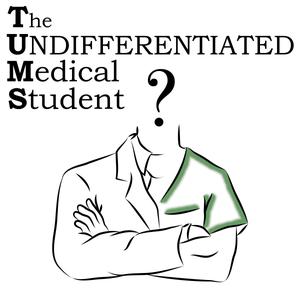 The Undifferentiated Medical Student
The Undifferentiated Medical Student
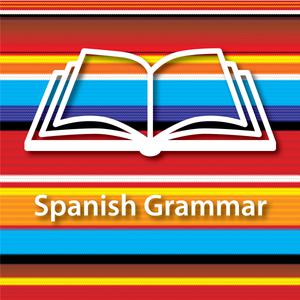 Spanish Grammar Review
Spanish Grammar Review
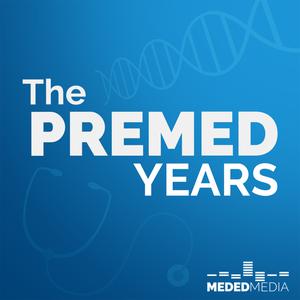 The Premed Years
The Premed Years
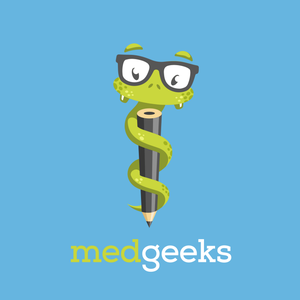 Medgeeks Clinical Review Podcast
Medgeeks Clinical Review Podcast